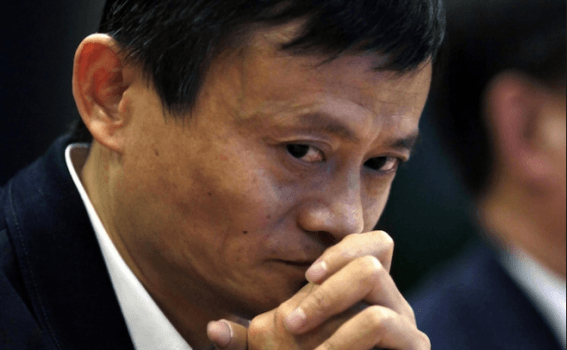How to Become a Master Trader in Cryptocurrency and the Stock Market
Embarking on a journey to master the art of trading in both the cryptocurrency and stock market realms is an ambitious endeavor. It’s a path that blends the fast-paced, innovative world of digital currencies with the traditional, established domain of equities. Achieving mastery in trading requires not just an understanding of financial markets but also a dedication to continuous learning, strategic foresight, and psychological resilience. Here are comprehensive insights into becoming a proficient trader across these dynamic financial landscapes.
-
Comprehensive Market Understanding
The cornerstone of trading mastery is a profound understanding of the markets you intend to navigate. This means not only grasping the operational mechanics of cryptocurrency and stock exchanges but also delving deep into the economic, political, and social factors that drive market movements. For cryptocurrencies, this involves understanding blockchain technology, memorizing a list of crypto symbols, and how factors like regulation changes or technological advancements affect market sentiment. In the stock market, it means analyzing economic indicators, company financials, and industry trends to make informed decisions.
-
Continuous Education
The financial markets are in a state of constant flux, with new trading instruments, regulations, and technologies emerging regularly. A master trader is always learning, staying ahead of trends, and adapting strategies to navigate the ever-evolving landscape. This includes regularly reviewing market analysis, attending webinars and workshops, and engaging with a community of traders to exchange insights and strategies.
-
Developing a Tailored Trading Strategy
Successful trading hinges on a well-defined strategy that outlines clear objectives, risk management protocols, and specific criteria for entering and exiting trades. Whether focusing on long-term investments or engaging in day trading, your strategy should be tailored to your risk tolerance, capital availability, and market understanding. Employing both technical analysis to chart and predict future price movements and fundamental analysis to evaluate asset intrinsic value can provide a comprehensive approach to decision-making. Consider consulting with financial experts for free if you need help developing a trading strategy.
-
Risk Management
A key component of trading mastery is the ability to manage risk effectively. This involves not risking more than you can afford to lose on a single trade, diversifying your portfolio to spread risk across different assets, and employing stop-loss orders to protect against significant losses. Understanding leverage and its implications, especially in the highly volatile cryptocurrency market, is crucial to prevent overexposure.
-
Emotional Discipline
Trading can be an emotional rollercoaster, with market fluctuations capable of eliciting a range of emotions from euphoria to despair. Master traders maintain emotional discipline, making decisions based on logic and strategy rather than emotional responses. This includes the patience to wait for the right trading opportunities and the fortitude to stick to a trading plan even in the face of losses.
-
Learning from Mistakes
Every trader makes mistakes, but what distinguishes a master trader is the ability to learn from these experiences. This involves conducting post-trade analyses to understand what went wrong, adjusting strategies accordingly, and viewing losses as educational opportunities rather than failures.
-
Utilizing Advanced Tools
Today’s traders have access to an array of technological tools that can significantly enhance their trading efficiency. Automated trading systems, advanced charting software, and real-time news feeds can provide traders with a competitive edge, allowing for quicker decision-making and more precise market analysis. Keeping abreast of technological advancements and integrating useful tools into your trading practice is essential for modern trading mastery.
-
Hands-on Practice
There’s no substitute for practical experience in the trading world. Simulated trading platforms offer a risk-free environment to practice strategies and get a feel for market dynamics without actual capital at stake. As confidence and competence grow, gradually transitioning to live markets and starting with smaller trades can help build practical trading acumen.
-
Staying Informed and Adaptive
In the fast-paced world of trading, being well-informed and adaptable is crucial. This means staying updated with the latest market news, economic reports, and global events that could impact asset prices. Master traders are not only reactive to current market conditions but also proactive in anticipating future market movements based on emerging technological trends and news.
-
Networking and Community Engagement
Trading, particularly in the digital age, doesn’t have to be a solitary activity. Engaging with a community of traders can provide valuable insights, alternative perspectives, and moral support. Whether through online forums, social media groups, or local trading clubs, networking with fellow traders can enrich your trading journey with shared experiences and collective wisdom.
Closing Thoughts
Becoming a master trader in cryptocurrency and the stock market is a comprehensive process that involves building a strong foundational knowledge, developing and refining a strategic approach to trading, cultivating psychological resilience, leveraging technological advancements, gaining practical experience, and engaging with the trading community. It’s a path characterized by lifelong learning, discipline, and an unyielding commitment to personal and professional growth. With dedication, patience, and perseverance, mastering the art of trading across these vibrant financial sectors is an attainable goal, promising not just financial rewards but also the profound satisfaction of navigating the complexities of global financial markets.





